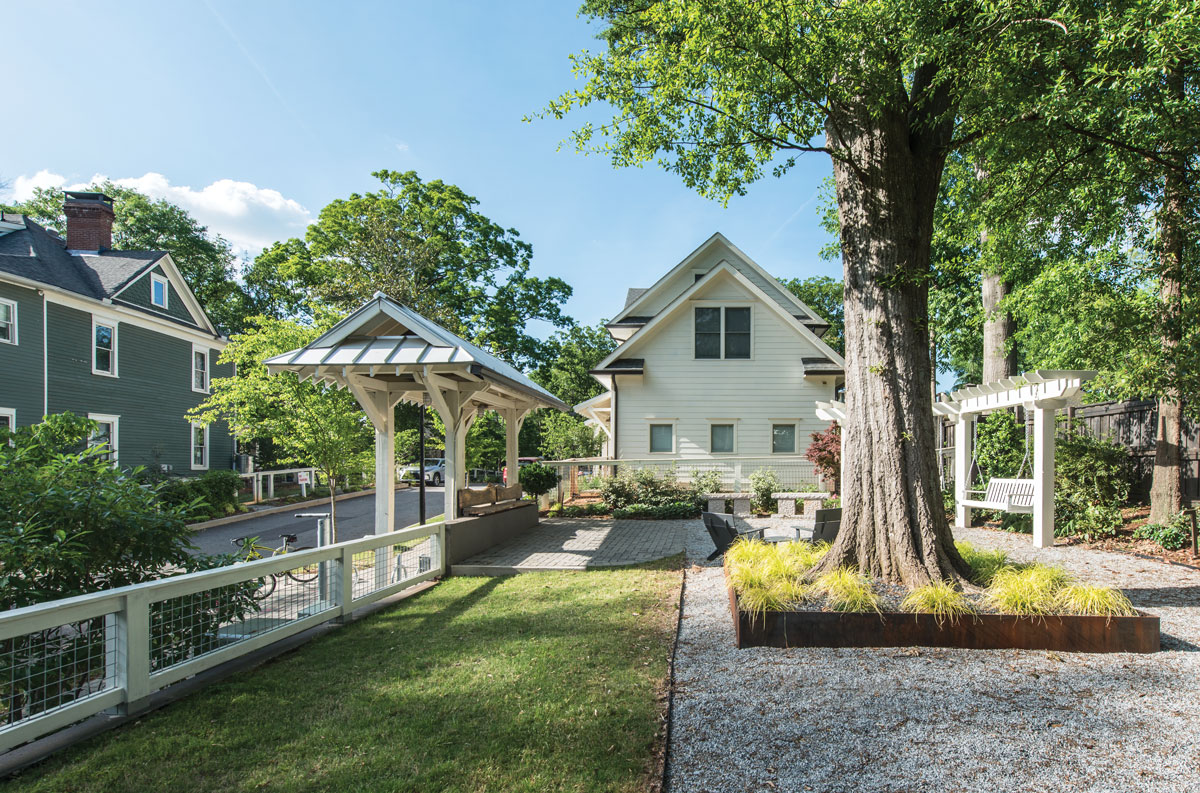
Photograph by Fredrik Brauer
A two-and-a-half-acre parcel in Edgewood, wedged between a Lowe’s and a MARTA station, bears vestiges of the countryside escape it once was, with an 1880s farmhouse formerly owned by a cigar magnate. For decades, the lot has been largely overlooked. But now, it has morphed into what could be a glimpse at the city’s future, as its population, by some recent estimates, is expected to triple in the next 30 years.
La France Walk—a 24-home “pocket neighborhood,” in urbanist lingo—has entered its final construction phase, aiming for a timeless look that reflects the farmhouse style of the lot’s original house (which still stands). Like other recent intown builds claiming vacant, larger lots in Reynoldstown (Abode’s Mattie Branch project, with its studio flats and light-commercial component) and Summerhill (European-influenced townhouses by Hedgewood Homes, some as small as 750 square feet), La France Walk is more innovative than a typical cluster of townhomes or a subdivision-style community carved into historic neighborhoods.
For starters, each standalone house comes with an attached guest suite. They’re used for long-term rentals, Airbnb suites (generating up to $1,800 monthly), home studios or offices, or in-law crash pads. Garages are scarce. Solar arrays, rainwater barrels, and Tesla battery packs abound. Duplexes commingle with one-bedroom units of just 720 square feet, allowing for some “workforce housing” sales in the $200,000s and maximizing density and income diversity.
The architect and developer, Eric Kronberg, says three duplexes are being reserved for renters. “Part of that’s a screening mechanism,” he says. “So, if you carry a mentality that renters are bad, well, this [project] may not be accommodating.”
Tim Keane, Atlanta’s planning commissioner, says fundamental changes to land use are necessary in a city where 70 percent of properties carry single-family zoning, allowing for just a standalone, often expensive house. As the 316th densest U.S. city—lower than, say, Smyrna—Atlanta is hardly full, Keane posits, and remains a relative infant in its growth trajectory.
“We should be seeking and encouraging everything we can to enable incredible density and ingenuity, if we really care about having a diversity of incomes in the city,” says Keane. “Whether it’s Edgewood, Kirkwood, Reynoldstown, Cascade Heights, or Pittsburgh, it’s essential to what I hear so many Atlantans say is important in the city’s future.”
This article appears in our Winter 2020 issue of Atlanta Magazine’s HOME.













